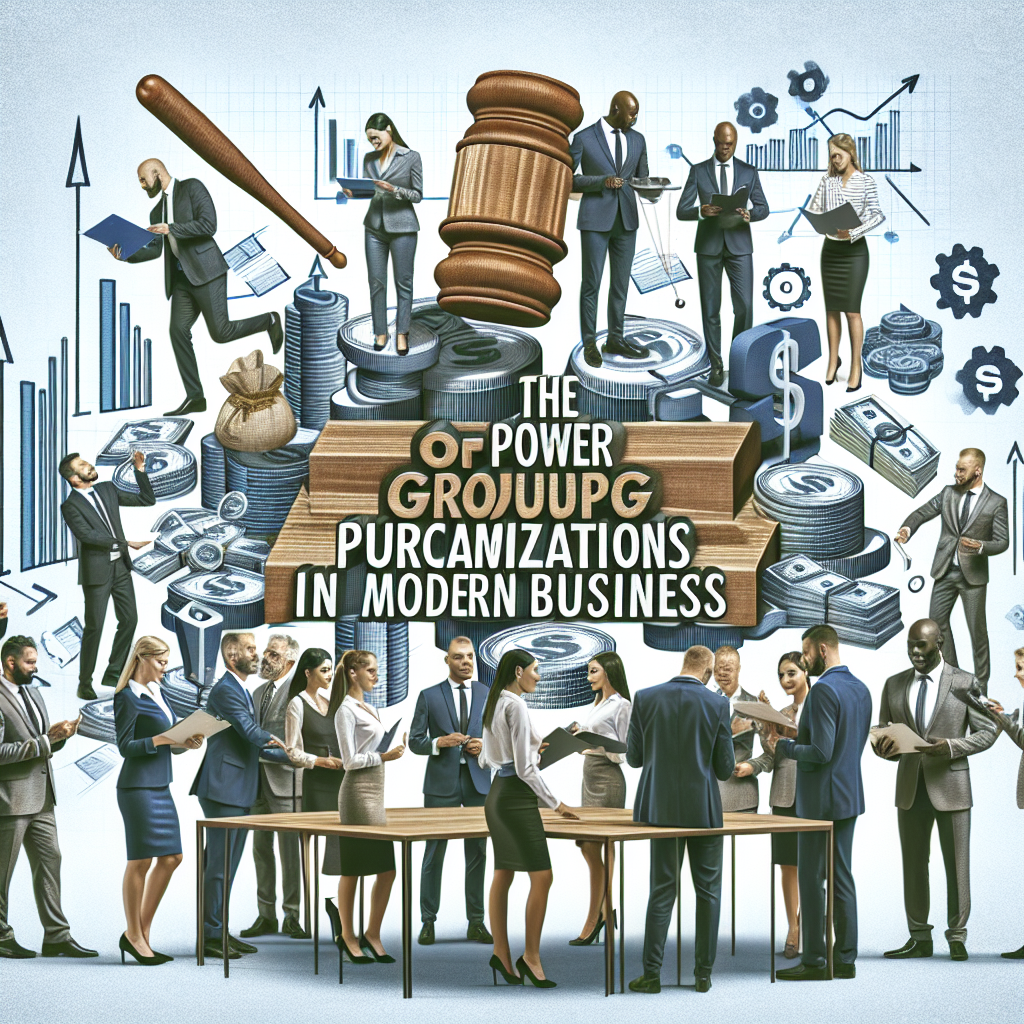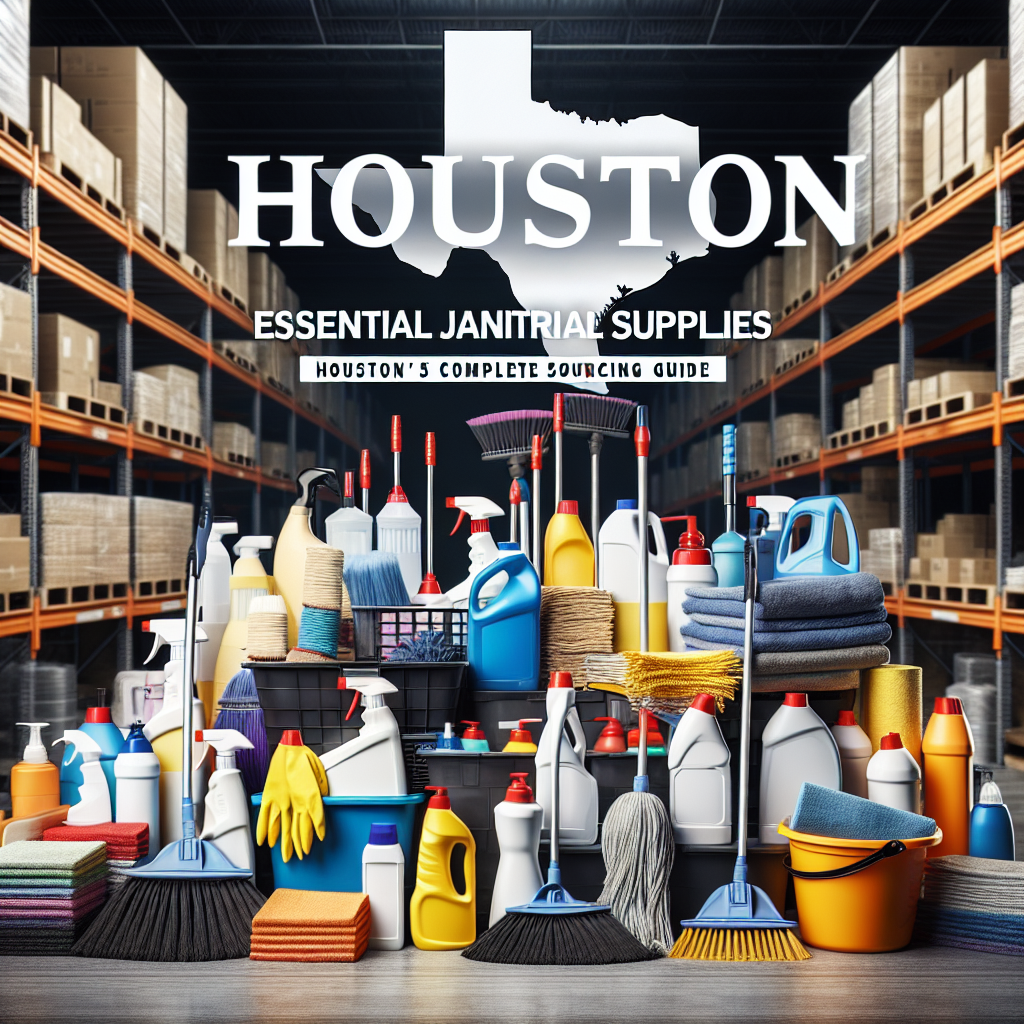Introduction
The role of a Chief Procurement Officer (CPO) is crucial in shaping an organization’s sourcing strategy. CPOs are responsible for overseeing procurement processes, managing supplier relationships, and ensuring that purchasing decisions align with organizational goals. Understanding CPO priorities is crucial in today’s business environment due to several factors:
- Cost Efficiency: CPOs aim to reduce operational costs while maximizing value.
- Supply Chain Resilience: They focus on building robust supply chains to mitigate risks.
- Sustainability: A growing emphasis on responsible sourcing and environmental impact.
This article will explore key areas where CPOs concentrate their efforts to drive value for their organizations, including:
- Operational efficiency
- Digital transformation
- Cost management amid inflationary pressures
- Supplier collaboration for resilient supply chains
- Sustainability initiatives
- Talent acquisition challenges
- Risk management processes
- Innovation as a competitive advantage
In the realm of cost management, one strategy that CPOs may consider is maximizing federal grant funding for nonprofits. This can significantly aid in reducing operational costs while increasing the value derived from procurement.
Additionally, boosting employee morale with break room supplies can also be seen as an indirect yet effective approach towards achieving cost efficiency. By investing in quality break room supplies, organizations can enhance employee satisfaction and productivity, ultimately leading to better procurement outcomes.
When it comes to healthcare procurement, understanding the essential PPE for airborne precautions is vital. This not only ensures the safety of employees but also aligns with the sustainability goal by promoting responsible sourcing practices.
Moreover, it’s important for CPOs to debunk common misconceptions around purchasing decisions. For instance, mythbusting GPOs can lead to more informed buying choices and better supplier collaborations.
Lastly, effective communication is key in demonstrating the value of procurement. Hence, being aware of certain procurement terms to avoid can greatly enhance this aspect.
1. Operational Efficiency
Achieving operational efficiency in procurement is essential for driving cost savings and enhancing turnaround times. By streamlining processes, organizations can significantly reduce operational costs, which directly contributes to improved bottom lines.
Key Techniques for Streamlining Procurement Processes:
-
Automation: Implementing automated tools minimizes manual tasks, reducing errors and speeding up procurement cycles. Automation software can handle everything from purchase orders to invoicing.
-
Standardization: Establishing standardized processes across departments helps in maintaining consistency and simplifies training for new employees. It also enables better compliance with company policies.
Reducing transactional activities allows Chief Procurement Officers (CPOs) to focus on strategic decision-making. When procurement teams spend less time on routine transactions, they can allocate resources towards analysis and supplier relationship management. This shift leads to value creation through:
- Enhanced negotiation strategies
- Better supplier collaboration
- Increased innovation in sourcing solutions
Investing in operational efficiency is not merely about cutting costs; it transforms the procurement function into a strategic partner within the organization. This transformation positions procurement teams to contribute more effectively to broader business objectives, driving sustained growth and competitive advantage.
For instance, during tough economic times, building resilience in procurement becomes essential. This involves adopting strategies that not only help in weathering the storm but also position the organization for future success.
Moreover, understanding the financial aspect of procurement roles can provide valuable insights. For example, knowing what to expect regarding procurement engineer salary trends in 2025 can aid in better budgeting and resource allocation.
Additionally, embracing frugal living principles can further enhance cost efficiency in daily operations.
Lastly, for those managing a one-person procurement function, implementing strategic solutions can optimize operations and improve supplier management. Our guide on tips for managing a one-person procurement function offers valuable insights in this regard.
Understanding the nuances of diversity, equity, and inclusion (DEI) in the workplace is also crucial as it fosters a more inclusive environment that can lead to enhanced productivity and employee satisfaction.
2. Digital Transformation
Digital transformation is reshaping the procurement landscape, offering a pathway to increased efficiency and enhanced decision-making. CPOs recognize that leveraging digital tools can significantly improve procurement outcomes. In fact, as highlighted in this article about the urgency of digital transformation in procurement, adopting these technologies is no longer optional but a necessity.
Key Technologies Driving Change
- E-sourcing platforms: Facilitate supplier selection and contract management, streamlining the procurement cycle.
- Spend analysis tools: Provide insights into spending patterns, helping organizations identify cost-saving opportunities.
Enhanced Data Analytics Capabilities
The integration of advanced data analytics empowers CPOs to make informed decisions. With robust analytics:
- Organizations can forecast demand accurately, aiding in inventory management.
- Supplier collaboration improves through shared insights, fostering transparency and enhancing relationships.
This digital evolution not only boosts operational efficiency but also positions procurement as a strategic function within organizations. As businesses adapt to these technologies, the focus shifts towards harnessing data for value creation, ultimately driving competitive advantage in a rapidly changing market.
Moreover, embracing a GPO membership can further enhance procurement strategies by providing access to collective buying power and exclusive discounts. In addition, exploring private sector group purchasing benefits can unlock new avenues for cost savings and supplier negotiation leverage.
As we look to the future of procurement, it’s essential to stay ahead of the curve by understanding the top trends in supplier innovation. These trends will not only shape the way we approach supplier relationships but also redefine the overall procurement strategy.
3. Cost Management Amid Inflationary Pressures
The role of cost management has evolved significantly within the broader strategic goals of organizations. As inflationary challenges in procurement escalate, CPOs must adopt innovative cost reduction strategies to navigate this complex landscape.
Key strategies include:
-
Long-term Contracts: Establishing agreements with suppliers for extended periods can lock in prices and protect against future price hikes. This approach provides stability in budgeting and forecasting.
-
Supplier Negotiation Tactics: Effective negotiation skills are crucial for securing favorable terms. Engaging suppliers in transparent dialogues about pricing and value can lead to mutually beneficial agreements, which is a key aspect of supplier relationship management.
Ongoing cost monitoring plays a critical role in margin improvement. Regularly assessing expenditure helps identify areas where expense optimization techniques, such as tail spend management, can be applied. Utilizing advanced analytics can reveal spending patterns and highlight opportunities for savings.
Implementing these practices not only enhances immediate financial performance but also aligns with long-term organizational objectives. By prioritizing cost management amid inflation, CPOs position their organizations for sustainable growth, ensuring they remain competitive in a volatile market. Moreover, understanding the difference between strategic sourcing and category management can further streamline procurement processes and enhance overall efficiency.
4. Supplier Collaboration for Resilient Supply Chains
Building strong relationships with suppliers is crucial for ensuring continuity of supply and mitigating risks. Effective supplier relationship management fosters trust and enables organizations to navigate challenges more seamlessly, ultimately maximizing supplier performance.
Key strategies for enhancing supplier collaboration include:
-
Joint Innovation Projects: Collaborating on new product development or process improvements can lead to increased efficiency and shared benefits. This approach encourages a sense of partnership rather than a transactional relationship.
-
Information Sharing Practices: Open communication regarding forecasts, inventory levels, and production schedules helps both parties make informed decisions. This transparency builds a resilient supply chain by allowing quick responses to disruptions.
Organizations that prioritize these strategies often experience improved reliability and reduced lead times. Engaging suppliers in strategic discussions not only strengthens partnerships but also aligns goals towards achieving common objectives.
Investing in supply chain resiliency initiatives ensures that businesses can withstand unforeseen disruptions, such as natural disasters or geopolitical events. A proactive approach to supplier collaboration enhances overall operational performance, ultimately driving value throughout the supply chain.
For individuals looking to break into this field, exploring entry-level procurement jobs could be a promising start.
5. Sustainability Initiatives in Procurement Strategies
Sustainability considerations in procurement decision-making are gaining traction among Chief Procurement Officers (CPOs). This shift is driven by:
- Increasing Regulatory Requirements: Governments and organizations worldwide are enforcing stricter regulations that necessitate sustainable practices within supply chains.
- Stakeholder Expectations: Customers, investors, and community members are increasingly prioritizing sustainability, pushing companies to adopt responsible sourcing practices.
CPOs are integrating Environmental, Social, and Governance (ESG) initiatives into their procurement strategies. Key aspects include:
-
Responsible Sourcing: Ensuring that materials and services are obtained ethically and sustainably. This includes evaluating suppliers based on their own environmental practices and adopting compliance-driven sourcing, which not only meets regulatory requirements but also enhances brand reputation.
-
Circular Economy Principles: Focusing on reducing waste and promoting the reuse of materials. This approach not only supports sustainability but also drives cost savings through efficient resource management.
Adopting these sustainability initiatives does not merely meet compliance requirements; it enhances brand reputation and can lead to competitive advantages. Organizations like Hubzone Depot LLC exemplify this commitment by implementing best practices that align with community values while delivering significant cost reductions. Their effective sourcing strategies serve as a model for others in the industry.
CPOs must prioritize these initiatives to ensure long-term viability in the evolving marketplace. Continuous learning and adaptation, as demonstrated in Frank Corris’s transformative journey in procurement, are essential for mastering this field (Purchasing 2: A Life of Learning and Transformation). Moreover, leveraging advanced technology through best procurement software can further revolutionize procurement strategies, making them more efficient and aligned with sustainability goals.
6. Talent Acquisition Challenges in the Procurement Field
Attracting and retaining skilled professionals in procurement has become increasingly difficult. The rise of digital technologies has created a demand for new skill sets, complicating talent acquisition strategies for procurement professionals.
Key challenges include:
- Skill Gap: Traditional procurement roles are evolving. Professionals now need expertise in data analytics, digital tools, and strategic sourcing.
- Competitive Landscape: Organizations compete not only within their industry but also with tech firms that offer lucrative packages to attract talent.
- Awareness and Education: Many potential candidates lack awareness of career opportunities within procurement, often underestimating its importance in organizational success.
CPOs must prioritize developing robust talent acquisition strategies to navigate these challenges effectively. This includes:
- Implementing targeted recruitment campaigns to highlight the dynamic nature of procurement careers.
- Offering training programs focused on essential skills like data analysis and supplier relationship management.
- Creating a positive workplace culture that emphasizes growth, collaboration, and innovation.
Moreover, as organizations explore procurement optimization, they must also consider the advantages of purchasing groups versus group purchasing organizations. These models can streamline procurement processes and make them more attractive to potential candidates by showcasing the strategic importance and value of the procurement function.
Investing in talent acquisition is crucial for building a resilient procurement function capable of driving value amid ever-changing market demands. With the right strategies, organizations can cultivate a skilled workforce ready to meet future challenges head-on.
7. Risk Management Processes for Resilience Building in Supply Chains
In today’s unpredictable market, effective risk management processes are crucial for building resilient supply chains. Disruptions caused by natural disasters, geopolitical events, or economic fluctuations can severely impact operations.
Key Components of Risk Management Frameworks
Key components of robust risk management frameworks for supply chain disruptions include:
- Risk Assessment: Identifying potential risks and their impact on the supply chain.
- Mitigation Strategies: Developing plans to minimize the effects of identified risks through diversification of suppliers or inventory buffers.
- Monitoring Systems: Implementing technology solutions that provide real-time data on supply chain performance and external risks.
Approaches CPOs Are Taking to Enhance Resilience
CPOs are adopting several approaches to enhance resilience, such as:
- Supplier Audits: Conducting regular evaluations of supplier capabilities and financial health.
- Collaboration with Suppliers: Establishing strong partnerships to share information and resources during crises.
- Scenario Planning: Preparing for various potential disruption scenarios to ensure quick responses.
However, these strategies often require significant resources. Succeeding with limited resources is a challenge many organizations face. Investing in these risk management processes not only protects against disruptions but also supports long-term strategic goals. Emphasizing resilience enables organizations to adapt quickly and maintain continuity, ultimately safeguarding their operations and profitability.
8. Innovation as a Driver of Competitive Advantage in Procurement Functionality
The procurement landscape is rapidly evolving, necessitating a strong innovation culture within procurement teams. Continuous innovation is essential for maintaining a competitive edge and adapting to the dynamic needs of businesses.
Key aspects of fostering innovation in procurement include:
-
Encouraging Creative Thinking: Cultivate an environment where team members feel empowered to propose new ideas and challenge existing processes. This can lead to fresh solutions that enhance operational efficiency.
-
Embracing Technology: Invest in cutting-edge technologies such as artificial intelligence (AI) and machine learning (ML) to automate routine tasks and analyze vast amounts of data. These technologies not only streamline procurement processes but also reveal insights for strategic decision-making.
-
Collaboration with Suppliers: Engage suppliers in joint innovation initiatives. Collaborating on product development or process improvements can drive mutual benefits and strengthen partnerships, ultimately leading to better service delivery.
-
Continuous Learning: Implement training programs that encourage procurement professionals to stay updated on industry trends and best practices. This can enhance their ability to identify innovative approaches that align with organizational goals.
Fostering a culture of innovation empowers CPOs to respond proactively to market changes, ensuring their organizations remain agile and responsive in an increasingly competitive environment.
Conclusion
CPOs face the challenge of navigating a complex landscape while ensuring their organizations thrive. Balancing short-term priorities with long-term strategic objectives requires:
- Agility: Quickly adapting to market changes and emerging opportunities.
- Collaboration: Building strong partnerships both internally and externally to drive mutual success.
- Innovation: Embracing new technologies and processes to enhance efficiency and effectiveness.
As future trends shape the role of CPOs, staying attuned to evolving demands becomes crucial. Investments in digital tools and sustainable practices not only meet stakeholder expectations but also position procurement as a vital driver of organizational value.
The focus on continuous improvement will empower CPOs to lead with confidence, ensuring they remain at the forefront of procurement excellence. By prioritizing these elements, they can navigate challenges while creating impactful, lasting change within their organizations.





